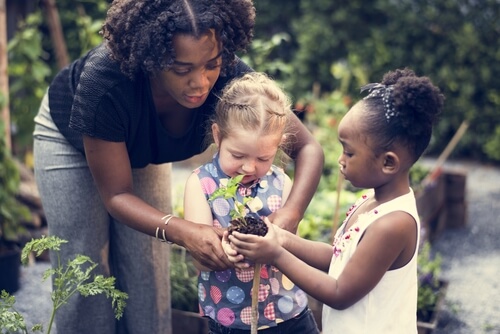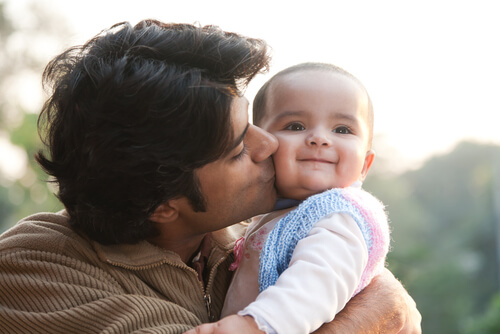Perceptual, Motor, and Physical Development
Children’s development is broken down into four types: fine motor, gross motor, perception, and health, safety, and nutrition.
In This Article
Speech Blubs App for Speech and Language Development
The more you practice, the more you learn! Explore more than 1,500 fun and engaging activities for your little one.
Boost Your Child’s Speech Development!
Improve language & communication skills with fun learning!

Perceptual Development
Children’s perception usually means “children’s use of their senses to gather and understand information and respond to the world around them” (School Readiness Program). Infants’ and toddlers’ use of perceptual information is key to their exploration, interactions, and understanding of their experiences.
This information also helps drives their daily experiences. This can include pressing harder on clay than on Play-Doh in an art project or walking carefully on a slippery surface. Preschoolers use this information to be more aware of their bodies in space and to move well enough to perform tasks, like kicking a ball to a friend.

Motor Skills
Kids use gross and fine motor skills to fully explore their environment and interact with people and things. As such, they are a big part of development in every facet of growth.
Gross Motor Skills
‘Gross motor skills’ refers to “moving the whole body and using larger muscles of the body, such as those in the arms and legs.” Infant gross motor skills include learning to control their head, neck, and torso to be able to stand or sit. They also include locomotor skills that start coming out in the toddler years, such as walking, throwing, and stretching.
Preschoolers learn even more control over their bodies, improving their confidence and ability to play with others. For example, as children become coordinated, they can learn how to pedal a tricycle and play tag.
Fine Motor Skills
‘Fine motor skills’ means “using the small muscles found in individual body parts, especially those in the hands and feet.” Children use fine motor skills to grab, hold, and manipulate small objects like drinking cups, or to use tools like scissors and paintbrushes.

As preschoolers develop hand-eye coordination, they learn to perform more complex tasks like drawing fine details or stringing small beads.
Children can practice and refine both types of motor skills doing a variety of learning experiences and while performing self-help routines, such as eating with a fork or putting on clothes.
Perceptual, Motor, and Physical Development are foundational to children’s learning in all areas because they permit children to fully explore and function in their environment.
Health, Safety, and Nutrition
The fourth type of child development is health, safety, and nutrition. Children’s physical well-being depends on a number of factors, including how much they know and use safe and healthy behaviors and routines, like learning to use a toothbrush with the help of adults.
As preschoolers become more coordinated, they can add toothpaste to their own toothbrush. Children’s ability to keep themselves safe and healthy, such as talking to adults when they are hungry or sick, is extremely important and helps learning and development in all areas.
Perceptual, Motor, and Physical Development Varies among Young Children
For many reasons, the rate and the path of perceptual, motor, and physical development vary in young children. Cultural and individual differences have to be considered. In some cultures, children use brushes to write their names, or eating utensils that require a great deal of hand-eye coordination. Their fine motor development may differ from other children because of their life experiences.

Children’s food preferences are also culturally-based, and they may reject foods that are usually considered healthy in other cultures. Children with disabilities may require more individualized instruction or other accommodations.
For example, children with physical disabilities may need adaptations, modifications, or assistive technology to help them move or hold implements. Children with sensory-motor integration challenges also may need accommodations. With appropriate support, all children can achieve strong outcomes in perceptual, motor, and physical development.
Developing gross motor skills enables children to explore their environment and experiment with different ways of moving their bodies. As children develop more coordinated and complex large muscle movements, they can participate in a variety of physical activities. This describes the standard path for physical development in early childhood.

